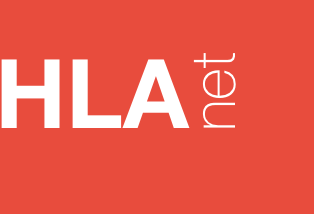International Journal of Immunogenetics 40(1):21-30, February 2013
16th IHIW: Analysis of HLA Population Data, with updated results for 1996 to 2012 workshop data (AHPD project report)
Riccio ME, Buhler S, Nunes JM, Vangenot C, Cuénod M, Currat M, Di D, Andreani M, Boldyreva M, Chambers G, Chernova M, Chiaroni J, Darke C, Di Cristofaro J, Dubois V, Dunn P, Edinur HA, Elamin N, Eliaou J-F, Grubic Z, Jaatinen T, Kanga U, Kervaire B, Kolesar L, Kunachiwa W, Lokki ML, Mehra N, Nicoloso G, Paakkanen R, Papaioannou Voniatis C, Papasteriades C, Poli F, Richard L, Romón Alonso I, Slavčev A, Sulcebe G, Suslova T, Testi M, Tiercy JM, Varnavidou A, Vidan-Jeras B, Wennerström A and Sanchez-Mazas A
Abstract
We present here the results of the Analysis of HLA Population Data (AHPD) project of the 16th International HLA and Immunogenetics Workshop (16IHIW) held in Liverpool in May-June 2012. Thanks to the collaboration of 25 laboratories from 18 different countries, HLA genotypic data for 59 new population samples (either well-defined populations or donor registry samples) were gathered and 55 were analysed statistically following HLA-NET recommendations. The new data included, among others, large sets of well-defined populations from north-east Europe and West Asia, as well as many donor registry data from European countries. The Gene[rate] computer tools were combined to create a Gene[rate] computer pipeline to automatically (i) estimate allele frequencies by an expectation-maximization algorithm accommodating ambiguities, (ii) estimate heterozygosity, (iii) test for Hardy-Weinberg equilibrium (HWE), (iv) test for selective neutrality, (v) generate frequency graphs and summary statistics for each sample at each locus and (vi) plot multidimensional scaling (MDS) analyses comparing the new samples with previous IHIW data. Intrapopulation analyses show that HWE is rarely rejected, while neutrality tests often indicate a significant excess of heterozygotes compared with neutral expectations. The comparison of the 16IHIW AHPD data with data collected during previous workshops (12th-15th) shows that geography is an excellent predictor of HLA genetic differentiations for HLA-A, -B and -DRB1 loci but not for HLA-DQ, whose patterns are probably more influenced by natural selection. In Europe, HLA genetic variation clearly follows a north to south-east axis despite a low level of differentiation between European, North African and West Asian populations. Pacific populations are genetically close to Austronesian-speaking South-East Asian and Taiwanese populations, in agreement with current theories on the peopling of Oceania. Thanks to this project, HLA genetic variation is more clearly defined worldwide and better interpreted in relation to human peopling history and HLA molecular evolution.
Supplementary material
- The detailed description of all data sets including population names, geographic locations, linguistic information, loci typed, samples sizes per locus, molecular techniques used to type the samples and resolution levels. A second sheet includes geographical regions and their codes. Get Tables (XLS)
- Tutorial to easily perform format conversions to Uniformat and to analyse HLA data with the Gene[rate] computer tools presented by AS-M and JMN at the Teaching Session of the 16th IHI Conference (Sanchez-Mazas & Nunes 2012). Get tutorial (PDF)
- Complete colour-coded graphs of allele frequencies (at the maximum resolution available) and summary statistics estimated at all loci for all population or donor registry samples submitted to the 16th IHIW AHPD project. Get graphs (ZIP)
